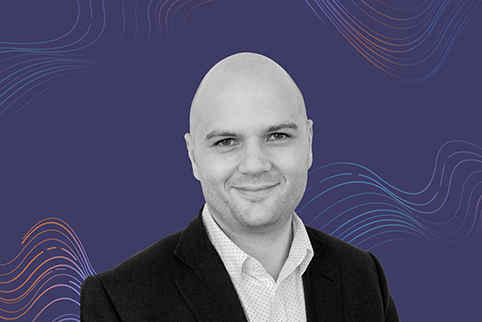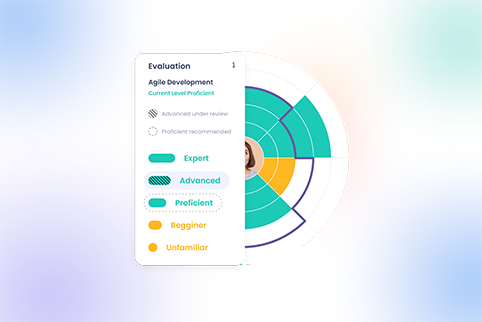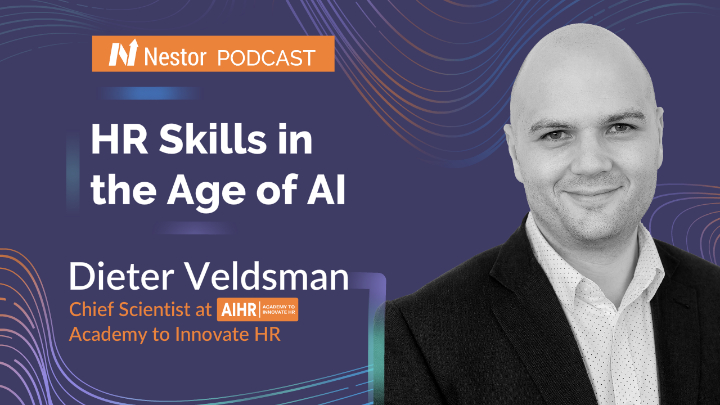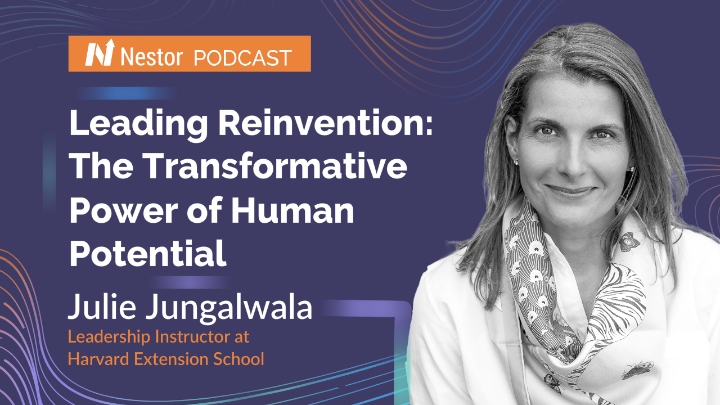With 20+ years experience in Human Resources and Learning and Development, Peter Walmsley talked about the importance of employee engagement in an organization and shared best practices on how to maintain it in a work from home environment.
Peter Walmsley is the Chief People Officer at GSN Games where he leads the global human resources and recruitment teams. He has a key role in driving restructure of business and setting up a new Operating Model that led to a significant reduction in operating costs and an increase in profitability. Member of the Exec Team, Peter provides leadership and direction on all people matters.
Peter is a highly experienced and committed leader with extensive Executive Human Resources experience in multi-national organisations across the USA; Europe; Asia and North Africa. He has a track record of success in setting the strategic direction, driving organisational change, providing leadership for the function, developing and influencing critical business relationships and delivering results aligned to business goals.
Part of the Sony Pictures family, GSN Games is a leading provider of cross-platform entertainment, including social casino games and skill tournaments designed to fuel every player’s inner winner (part of GSN, – Wheel of Fortune on TV). Founded in 1999 as a skills games site WorldWinner.com, the company has evolved into a premier social, mobile and online games company. Working at GSN involves an open workspace with game consoles all around. It is an open and transparent culture. Upper management is available for questions and conversations with employees. Additionally there is an emphasis on a healthy culture balance of work and private lives.
Prior to GSN Games, Peter was with Fidelity and Electronics Arts where he drove organizational change and transformation, provided strategic advice and guidance on all people-related issues, drove and maintained the employee engagement globally, led Talent Review & Succession Planning initiatives and was a Coach for senior leaders.
You can connect with Peter on LinkedIn.
Raluca Apostol is the Chief Product Officer at Nestor and you can connect with her on Twitter @RaluApostol.
How does the forced transition to a remote work environment affect the employee engagement?
Peter: First of all, I would say the transition to working from home was actually surprisingly seamless. For all of us now technology is such a key part of our lives and the ability to work from home, from a technology perspective, is very smooth and very easy to do. The challenge that any organization has is that we’ve got a global pandemic and, depending on where you are in the world, this creates all kinds of tensions for people.
The key question that I think helps engagement would be “Is the company doing well? Is the company surviving?”. We are very fortunate within the games industry that with all the additional time on their hands, people have been playing games, and as a result of that the company is doing extremely well. Whenever a company is doing well that has a positive impact on engagement as well.
Another thing that we are finding is that people go through a cycle – sometimes being highly engaged and then, depending on what’s going on in their lives, can have a dip in energy. They may not be feeling as positive as they were. It’s very important for us, as a company, to make sure that we still have our eyes and ears open on what’s going on with people around the organization. We recognize that there will be dips, there’ll be good days, there’ll be tougher days, but we’re actually trying to focus on a variety of different stimuli to make sure that people do feel connected and engaged.
Focus on a variety of different stimuli to make sure that people do feel connected and engaged.
— Peter Walmsley
How does this affect employee performance?
Peter: Within the games industry, the business is doing extremely well because more people are having more discretionary time and therefore our are playing games more. From a commercial perspective, the company is doing well. Productivity is also increased because people are not commuting, they’re saving time, they may be able to construct their day in a different way.
Because people are a little bit captive and they’re not required to go anywhere, there are not the usual distractions that we all have. Probably people are working a little bit more than they would do without the pandemic going on. For us productivity is good, but we’ve got a nice balance there of making sure that we don’t burn people out. This is a delicate balance between the two.
Productivity has been increased. People are working a little bit more than they would normally do without the pandemic going on. We've got a nice balance there of making sure that we don't burn people out. This is a delicate balance between the two.
— Peter Walmsley
What are some of the recommended practices that HR professionals and managers should change or apply in a work from home situation?
Peter: Things that we have done and went very well for us.
1. The CEO writes a letter to employees each week
This is an email at the start of the week really thanking them in part for their resilience and their hard work, but also being very open and honest about how the company is performing – given that there is naturally a lot of concern about employment around the world. In my opinion, this is a great thing from the CEO to do, to actually communicate to people at the end of the week. Sometimes that might focus on a theme of the week like: “How to remain positive”, “How to structure your day”, and more.
Thank them in part for their resilience and their hard work, but also be very open and honest about how the company is performing.
— Peter Walmsley
2. Build up a series of resources (globally) that people can look at
A set of videos, articles, links to books, etc. that people can look at and focus on such as “How do I organize my desk when I work from home?” or “What can I do at home to keep me fluent during the course of the day?” or “How can I structure my day” or if “I’m concerned about my mental health. What are some of the things I can either look at from a resource perspective or what support can the company give me to enable me to do that?”. What we tried to do is to have a range of approaches and solutions that people can tap into and actually keep it up in people’s mind that “We, as a company, are here to support you and here’s a range of tools and approaches to enable you to do that”.
We, as a company, are here to support you and here's a range of tools and approaches to enable you to do that.
— Peter Walmsley
3. Make sure that you are staying connected with people at all levels
We are making sure, from a management perspective and also from an HR perspective, that we’re staying connected with people at all levels. This involves talking to them regularly, finding out how they’re getting on, what are some of the challenges and how can we address some of those. An example would be that we realized in some people, who are working from home, they may not have good desk space and they’re getting chronic backache. As a result of that, we have created a situation where we are enabling people to buy a raised desk. In this way, they can raise their desk and they can stand up. That will have positive benefits for them and for everyone. This is one example when they know that the company is prepared to help and support them.
We are making sure, from a management perspective and also from an HR perspective, that we're staying connected with people at all levels.
— Peter Walmsley
What are some ways of increasing people’s motivation and a sense of belonging while working from home?
Peter: There is a number of ways that worked well for us.
1. Social events
There have been social events later on in the week that we’ve got everyone together on a zoom call just to have some downtime, some social time with everyone. I think that’s a very nice way!
2. Enable people to take some time out
In some areas, people have complicated lives at the moment or more complicated lives whether they have children or loved ones that they’re going to look after in the house. We’ve actually enabled people to take some time out such as not having meetings in a day or taking some time off to concentrate on private life and re-energize.
3. Fun activities
We’ve had quizzes, happy hours, slack channels where people are posting pictures of their pets or we’ve got a song for the day that’s been posted on our slack channel. It’s a variety of different things that we are doing there and that are enabling people to feel that they are part of something.
4. Encourage managers to check-in with their people on a regular basis
In addition to our formal lines of communication, we’re encouraging our managers to check in with their people on a regular basis. We have central resources and we are looking to help people at all levels.
5. Keep your eyes and ears open
Trying to make sure across all parts of the business that we are keeping our eyes and ears open. We’re also making sure that when we say that we care about the health and safety of our employees first, we’re actually doing that. Making sure that we can keep them focused and engaged throughout this acknowledging there’ll be good days and bad days for all.
Keep your people focused and engaged throughout this acknowledging there will be good days and bad days for all.
— Peter Walmsley
How should organizations measure employee engagement and what are some key aspects they should focus on?
Peter: A couple of weeks ago we did a short 10 question survey across the organization really focusing on the extent to which we were providing the right kind of communication for people. We were looking to see that people were hearing from their line managers and they were getting consistent messages between their manager and the company. We are also looking to see that they feel supported in their day-to-day work. We also gave people the opportunity to say what else do they need.
In this way we were able to determine by location and by function how engaged people were, how appreciative or how valued they felt. So we’ve got a very clear sense of engagement by location on that and what it enabled us is to extract learnings. Based on those learnings, we were able to make some adjustments in terms of the way we’re providing things to people or providing more tools to enable them to work effectively from home. That was a very good way of just checking the pulse and making sure that we were doing the right things for people. If there was learning, we questioned ourselves what was that learning and how could we address it going forward. We intend to ask those questions again probably in a few weeks time depending on what happens in the next phase of the pandemic and keep an eye on how people are feeling and the level of engagement.
Determine by location and by function how engaged people are, how appreciative or how valued they feel.
— Peter Walmsley
How do you deal with uncertainty?
Peter: We’ve tried to be honest with people and say “We don’t know what’s coming.” There is no playbook for how we address this next phase, but what we have said is that a core principle for ours is the Health and Safety of our employees and that we are not going to rush into any decisions to head back to work.
Our core principle is Health and Safety of our employees and we are not going to rush into any decisions to head back to work.
— Peter Walmsley
We will take a considered view by location and most likely it will be different. We’ve tried to continually reassure people that we are thinking about it, we’re talking about it, we’re not making any decisions yet. We’re looking to see what’s going to happen in each location and there are a number of dependencies that we have to factor in before we feel it’s safe enough in any of our locations, irrespective of what a government might say or a state might say. We’ve got to feel that from a company perspective it’s comfortable for people to go back to an office in some way, shape, or form.
We've tried to be honest with people and say 'We don't know what's coming ... '
— Peter Walmsley
Are people worried about their professional development?
Peter: The first few weeks it was more a question of how do I adjust, how do we all adjust and how do we all make sense of our new way of working. What we have seen in a couple of locations just recently, we’ve given access to some learning and development material for people. People have probably more downtime and they’ve got an opportunity to look at a variety of different learning development options that are going to continue helping them through this process.
We’re now in that phase of looking to see what else we can do, what other learning and development material for people so that we don’t lose sight of that important part of people’s development. But again it’s about a balance – the first phase definitely was very much focusing on adjusting, getting used to working from home and dealing with all of the aspects that go alongside the pandemic and now, based on some of the feedback and the views we’ve had, we’ve been able to add some learning and development opportunities for people. Definitely, the whole of the HR world has got to rethink what we do, how we provide it and think through some of the opportunities to provide access to L&D outside of the normal channels of getting everyone in the room.
The HR world has got to think through some of the opportunities to provide access to L&D outside of the normal channels of getting everyone in the room.
— Peter Walmsley
What is your opinion about the long term effects of COVID-19 on people engagement and organizational development? How does this accelerate the Future of Work?
Peter:
What’s going to change more than anything is just the look and feel of offices. I don’t see for quite some time any office that we have having a full capacity of people operating in it. I genuinely believe that the flexible working from home may be working from home one or two days a week or maybe go into the office. One or two days a week on a rotational basis will very much become the norm and maybe there’s less requirement for office space set out in the traditional way that it’s always been set out. I’ve often been saying to people recently that you’re going to lose the relationship with your desk – I’ve had my desk for many years in various different companies and I’m afraid it’s time to do to divorce my desk. I may drop into an office for one or two days a week and there be an area maybe that I can drop into and interact with.
I certainly see more flexibility, more people working from home, very clear guidelines about how and when people come into the offices for a period of time and less need for the same real estate resource going forward.
I see more flexibility, more people working from home, very clear guidelines about how and when people come into the offices and maybe less need for the same real estate resource going forward.
— Peter Walmsley







